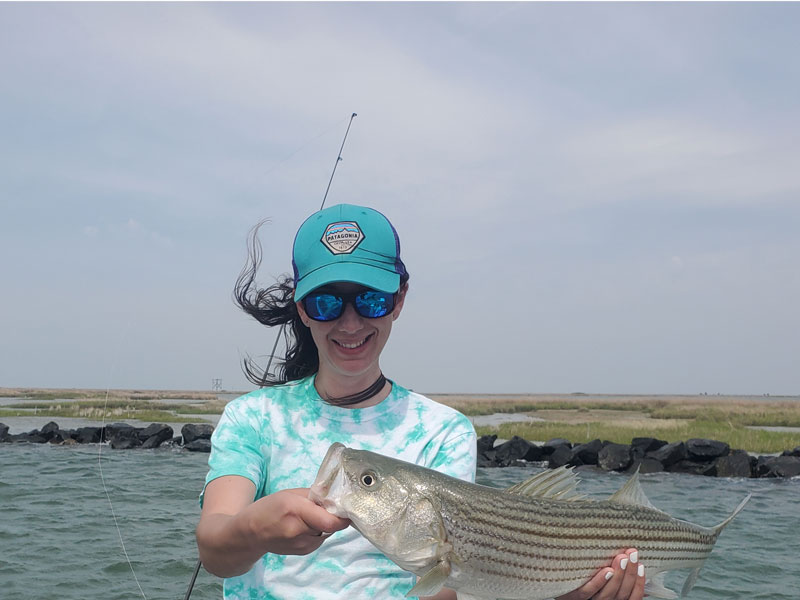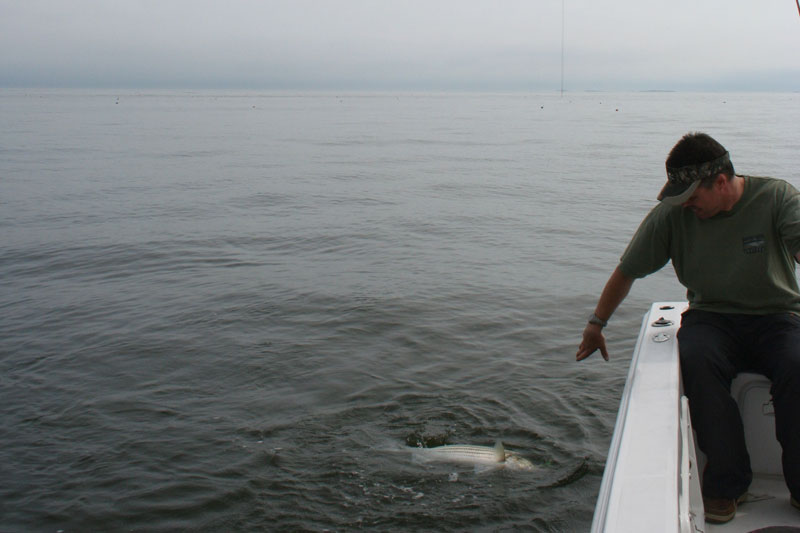Topwater is an exciting way to fish, but you can choose the most tempting plug, cast it with pinpoint accuracy, and bring it back with the picture-perfect walk-the-dog retrieve, and if it never passes by any fish you won’t be rewarded with the much-anticipated explosion from below. Where you throw that plug is even more important than how you retrieve it, so knowing where fish will likely smack your Smack-It is a critical part of the fishing puzzle. And it’s one you can work on ahead of time. True, a blind squirrel does occasionally find a nut, but if you spend some time prospecting prior to a fishing trip you’ll enjoy far more action than you would otherwise.

Eye in the Sky
There was a time not too long ago when prospecting a tributary or shoreline meant dedicating a day to physically scouting it. And, truth be told, there is still no better way to ID top locations than to fish them, albeit briefly, as you hop from spot to spot to cull the fish-producing wheat from the tempting-looking but unproductive chaff. You can, however, up your odds of success and speed the process along with a little bit of pre-trip Googling.
Google Earth views are NOT 100-percent tell-alls. Differences in sun angle and glare, the time of year the image was taken, and water clarity at the time the image was taken will all affect just how helpful the bird’s-eye view will or will not be. So never glance at an image and write a spot off completely, nor assume it will be a bonanza there. That said, it will often allow you to pick out key visible features that are make or break when it comes to supporting a topwater bite.
Creature Feature
So, just what are those key features? In order of importance, they are:
- Structure
- Current
- Depth Change
Fail to find structure, and you’ll fail to find fish. This one item alone can attract some fish to some places some of the time, and at times will produce even without the other key features present.
Current comes next on the list, because quite often good structure hit by a good current will hold fish during specific periods of tide. Often this will be shallow structure during high water, but you’ll also find structure in a couple-few feet of water which will hold active fish on any tide as long as the current is moving around it.
Finally we have depth change. Not depth per se, because you’ll catch predators in water barely deep enough to cover their dorsal fin. The critical thing here is a change to and/or access to deep water nearby. A gradual slope can hold fish, but a couple feet of abrupt depth change with five or 10 feet of structure is apt to hold more, larger fish.
Let’s Play Clue
Ready to put these together in a visual? Take a look at these three potential hotspots, as viewed on Google.

The shot of the point on the far left seems fairly unappealing. You can see there’s structure in the form of a rip-rapped shoreline, but there aren’t any indicators of nearby depth change nor of any current. Give it a grade of C. It’s worth pulling back the throttles and taking a few exploratory casts if you’re passing by, but it’s probably not worth making a long run to get to nor burning up prime sunrise/sunset hours, unless you have additional intel that it’s a hotspot.
The spot in the middle shows structure, and depth change along that structure. Current isn’t visible but that could be a function of when the picture was taken or it could be obscured by the visible wind-driven waves. Give it a B grade, and mark it down as a place you’ll definitely want to cast to the next time you’re in the neighborhood.
On the far right we have structure, depth change, and an indication that there’s current — small standing waves in the mouth of a cut (which are not visible on similarly-situated coves in the same shoreline). With all three factors visually present it gets an A, and you’ll want to make it a point to visit this one when you have good topwater conditions. And for those who want proof: look at the picture of PropTalk editor Kaylie (in the blue hat, above). She caught this fish casting at the same riprap seen in this Google image.
The Eyes Have It
All of what we just talked about notwithstanding, the fact remains that in all things fishing there are no “rules,” and you never know what odd detail or quirky feature will make a so-so looking spot turn out to be awesome, or an awesome-looking spot turn out to be a waste of time. So even after you Google-scout and map out a day’s adventure, the first few times you fish an area you should stay on the move and try to hit as many different potential spots as possible. Initial trips to new waters should always be looked at as intel-gathering missions as much as anything else.
In that vein, remember that particularly with topwater, time of day and light levels will have a huge impact on how successful you are at any given spot. Let’s reconsider those ABC hotspots we looked at just a moment ago. You know daybreak is primetime, so it makes sense to hit A pre-dawn, then try B as the sun’s just coming up, then try C in full daylight. That’s a solid plan. But remember that you just stacked the deck in spot A’s favor. If you catch four fish at A, two at B, and two at C, you might want to consider trying C during prime-time on your next trip because it has out-performed expectations based on both Google-appeal and timing.

Wait a sec — what about tides and currents? Was the current meh at daybreak, then cranking when the sun was up? In that case, you’ll need to give more points to spot A and subtract from spot C. Or, did heavy cloud cover move in? Did a front pass through? Did someone on your boat slam a hatch as you attempted to stealthily approach any of the spots? The puzzle is just as complex as it is with any other form of fishing, but spending some time prospecting will give you a leg up as you start sorting through the pieces.